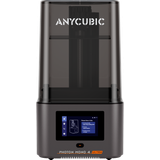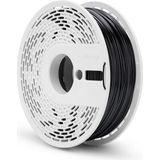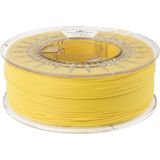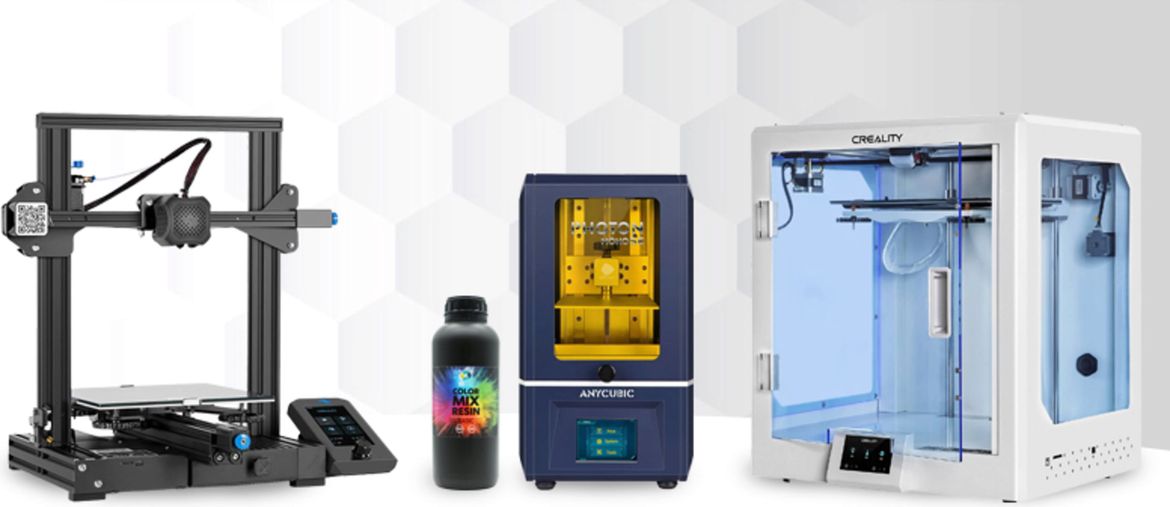Buying a 3D printer - What you should consider
A comprehensive guide for beginners in 3D printing
Hardly any other technical field has developed as rapidly in recent years as 3D printing. Especially in commercial, technological, industrial and scientific use, 3D technology has become indispensable. But 3D printers have long since arrived in private households and are more popular than ever. Public interest in 3D printing is growing rapidly, as is the variety of 3D printers for private use.
If you are reading this article, you are probably one of those people who are toying with the idea of getting such a device. If you have decided to buy a 3D printer or if you are at least considering it, you quickly realise that choosing from the many different devices is not that easy.
We want to show you what you have to consider if you want to buy a 3D printer and thus make your choice a little easier.
Basics of 3D printing
In order to really understand the following properties and differences, let's first briefly deal with the necessary basics and take a look at current printing technologies. We limit ourselves here to the two most popular techniques that are most used in the private sphere.
To keep it simple, we basically differentiate between FDM printers (filament printers) and resin printers (SLA / DLP / LCD).
FDM printing process
FDM (Fused Deposit Modeling) or FFF (Fused Filament Fabrication) are 3D printing processes in which a filament in the form of a thermoplastic strand is heated in a print head and printed on a printing platform through a nozzle.
In this process, the selected model is built up layer by layer. When talking about 3D printers, in most cases an FDM printer is meant.
What is the filament in FDM printing?
The so-called filament is a material that is available wound on a spool and processed in the FDM printer. There are a number of different filament materials (PLA, PETG, ABS, nylon, etc.), which differ significantly in their properties. Filaments are also available in various diameters and numerous colours.
Special filaments for special models
There are now numerous special materials in which wood, metal, carbon or stone have been processed.
If you want to buy a 3D printer, it is extremely important to find out which materials the desired printer can process and which diameter is required.
Advantages of FDM printing
- Material costs can be kept low
- Low printing and follow-up costs
- Variety of filaments (different colours and materials)
- Simple, straightforward handling
- Hardly any post-processing effort
- Fast additive process, especially in rapid prototyping
- Possibility to manufacture robust, impact-resistant and weather-resistant models
- Constant further development of the technology
Areas of application for FDM printing
- Functional prototypes and end products
- Art objects
- Modelling
- Decorations
- Illustrative models
- Spare parts
- Devices
- Toolmaking
Resin printing process (SLA / DLP / LCD)
Resin printing processes are further subdivided into SLA printing (stereolithography), DLP (digital light processing) and LCD technology. All variants are very similar, which is why we will only briefly discuss the differences:
In all cases, liquid, photosensitive resin is used.
In SLA printing, this resin is cured with a UV laser.
DLP printing uses a so-called DLP projector, which projects the print object or the layer to be printed onto a pixelated screen. Only the required area of the display is illuminated for each layer. As the name suggests, LCD technology uses an LCD screen and a UV light source.
Benefits of SLA / DLP / LCD printing
- Detailed, fine surface
- High manufacturing accuracy
- Possibility of transparent models
- Possibility of more complex shapes
Areas of application for SLA / DLP / LCD printing
- Medicine / dentistry
- Jewellery
- Science
- Mechanical engineering and product design
- Art
You should ask yourself these questions before buying
Now we've already learned a few basic facts about 3D printing. But before you blindly decide on the best device, you should still ask yourself these 4 basic questions:
1. What is your budget? / How much are you willing to spend?
If you want to buy a 3D printer, the budget also has an impact on the purchase. Think about how much you are willing to spend on a 3D printer. The price range is very wide in this industry, but there are numerous inexpensive models that are impressive.
- Cost of FDM printing
Especially in the area of FDM printing, you get a decent set of basic equipment for little money. The running costs are also manageable with FDM printing: You can get good filaments in our shop for around 20-25 € / kg, for example.
For special materials such as wood, metal or flexible filaments, you have to lay down a little more. You will definitely get inexpensive but good basic equipment (printer and material) from 300-400 euros.
- Cost of SLA / DLP printing
Resin printers are now also available inexpensively. You can find affordable entry-level models for less than 400 euros. Of course, as with FDM printing, there is no upper price limit for resin printers either.
If you decide on a resin printer, you should only take into account that in addition to the printer itself, you also need other devices for post-processing.
An inexpensive SLA printer including curing machine and material will cost you around 500-600 euros in our shop.
In contrast to filament printing, you have to expect higher running costs with resin printing. 1-litre bottles of the printing material start at around 30 euros. In the case of SLA printing, the resins often cannot be replaced with materials from other manufacturers and you are bound to one manufacturer. If you print with the DLP or LCD process, this is usually not a problem.
2. What do you want to print? What are your ideas?
The choice of the 3D printer depends a lot on what you want to print with it. For example, if you mainly want to print parts for your car or if you need heat- or weather-resistant models, the printer should also be designed to process the respective materials.
Depending on the purpose of the models, there are different requirements for the material and 3D printer, here are some examples:
- Decoration / display models / figures → Visual quality
- Model making → High load capacity
- Tools → High stability and reliability
- Prints for outdoor use → UV-resistant, weatherproof
3. What properties do you expect from your 3D printer?
Should it print particularly quickly, be very quiet or is it important to you to be able to print large models?
In addition to the intended use of the print models, there are also other properties that significantly differentiate 3D printers from one another:
- Connectivity
To print a model, not only the 3D printer itself, but also a computer / laptop with USB connection and / or WLAN or an SD card is required to transfer the desired model to the printer.
- 3D printer kit or fully assembled
3D printers can be purchased fully assembled or as a kit.
- 3D printer kit
A 3D printer kit is usually cheaper than a finished, assembled device, which is why many customers choose it. The assembly can be challenging for a beginner, but it can also help to better understand the 3D printer and its spare parts.
- Fully assembled 3D printer
If you decide on a fully assembled device, you don't have to worry about a correct assembly, you set up the 3D printer and can start printing straight away. If you want to be on the safe side as a beginner, it is advisable to use a fully assembled device. This costs a little more, but you can't go wrong and slowly approach the printer and its parts.
- Print speed
We mention the printing speed here, because for many people who want to buy a 3D printer, it is initially an apparently important comparison value for different products. At the same time, however, we would like to point out that it makes less sense to put the printing speed in the foreground when buying. Here's why:
First of all, it should be noted that the printing speed of an FDM printer does not only depend on the device itself, but also on factors such as the temperature of the printing nozzle, the material to be processed, the thickness of the filament, the layer thickness and the number of supports required.
In addition, there are other general factors that affect the speed of printing. This includes, for example, the orientation of the object and the amount of material to be printed. If you want to increase the printing speed, it can be helpful to change the height of the model by adjusting the orientation.
With resin printing, the printing speed depends on the light output of the printer and the properties of the material.
- Print size / print volume
The print size is an important comparison factor in 3D printers, as it determines the maximum size of the printed model. The print volume is calculated in XYZ: X = width, Y = depth, Z = height.
If you don't want to print several small parts and then connect them together, you should use a larger 3D printer right away.
- Direct-drive extruder or Bowden extruder
A direct-drive extruder is built into the hotend, the filament is pushed directly into the nozzle - all filament processing elements are in place in one place. In addition to “normal” filament, this is also suitable for processing special filament types.
The Bowden extruder is located on the frame of the 3D printer, which also has advantages (less weight on the print head = clean movements), but it is more suitable for processing standard filament types such as PLA.
If you would like to find out more about the differences between the two extruder variants, you can also find the article “Direct extruder vs. Bowden extruder - these are the differences” in our guide
- Dual extruder (double extrusion)
If 3D printers are equipped with two extruders, different colours or materials can be used for the same print model during printing. A major advantage of dual extruders is the possibility of combining different materials, e.g. an additional, dissolvable material for support structures, in one print.
- Layer height
Since the layer height depends on the 3D printer used, it is one of the most elementary properties of 3D printers. It is the height of a single layer that the printer will use to build the model. Basically, the lower the layer height, the finer and smoother the surface of the 3D print will be. With commercially available 3D printers, the average layer height is 0.1 mm to 0.32 mm.
The layer height is not only dependent on the 3D printer used, but also on the software with which a model is sliced. Good 3D software nowadays has hardly any restrictions on the layer height.
- Heating bed - Nice to have?
The heating bed is a heatable print bed with which the processed plastic does not cool down as quickly. This avoids warping of the material and unwanted bulges. While some materials (e.g. ABS or PETG) require a heatable print bed, it is not absolutely necessary when printing PLA.
If you want to process different filaments, we think: A heating bed is nice to have!
4. Where do you plan to print?
You should also think about the location of your future printer. Ideally, you have a work room or workshop in which you can place your 3D printer. Although it is safe to use it in the living room with most materials, there are some factors that speak against it:
- Space requirement
Depending on the size of the printer, you need enough space to accommodate the device itself, as well as the material and any tools. The printer should also be on a stable table so that it makes less noise.
- Background noise
As already mentioned, most printers create background noise. Even if many 3D printers have now achieved a very low level of noise, they cannot be completely ignored.
- Dirt
While 3D printing doesn't really create “dirt”, you can expect to have to remove support material from time to time or have to sand something. So it can happen that one or the other small material falls on the floor and does not end up in the trash can.
Latest reviews
-
 £84.50
£84.50Delivery by January 21
-
 5.0 (2)
5.0 (2)Anycubic Photon Mono 4 Ultra
-7%- 10K Monochrome Display
- Intelligent Assist Printing
- COB light source + Fresnel lens
£243.31 £262.10Delivery by January 23
-
 £21.50 (£25.29 / kg)
£21.50 (£25.29 / kg)Delivery by January 21
-
 4.7 (3)
4.7 (3)Spectrum HIPS-X - Bahama Yellow, 1.75 mm / 1000 g
- High-impact resistance
- Easy to print
- Can be used as a support material for ABS
£22.50 (£22.50 / kg)Delivery by February 03
Magazine Articles:
-
Great Britain: Free standard delivery from £69.90
-
Free
returns More than 10.350 products
We deliver worldwide to
more than 40 countries

